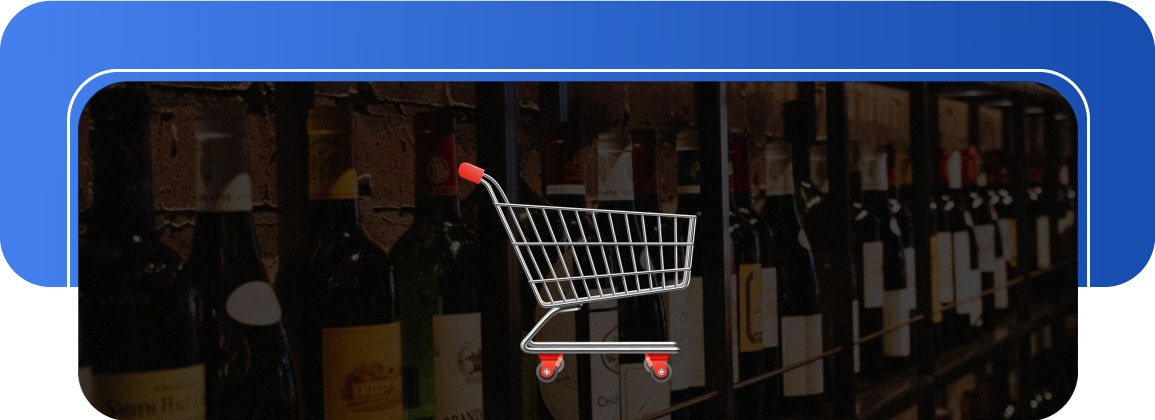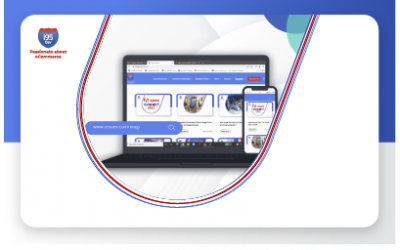Did you know direct-to-consumer (DtC) channel contributed $2.33 billion in sales in 2016 in the Wine industry? It represents a whopping 18.5% rise year-on-year, when growth through other sales channels has been rather fragile at around 5%.
While e-commerce sales growth has been outperforming the traditional sales channels since 2013, the direct-to-consumer channel contributes only 4% of the total sales in the industry. This represents a huge untapped and growing opportunity for most businesses. Despite the huge potential, businesses in the wine industry have been late adopters to e-commerce.
But, businesses are now opening to this amazing channel of sales. In a recent study conducted by Wine Business Institute at Sonoma State University, selling wine directly to consumers was identified as one of the top factors for success in the industry.
In this blog, we will look at how e-commerce (and possibly e-commerce integration) can help businesses address the top challenges in the wine industry.
Challenge 1 – Decreasing Margins
Apart from the challenges that are beyond their control like climatic changes, the most common challenge plaguing the wine industry is the plunging margins. Controlling costs without compromising on the wine quality has been a point of debate across most wine conferences.
The traditional wine distribution network follows a linear structure. The winery produces wines which is then distributed to wholesalers, the wholesalers are then responsible for getting the products in the hands of retailers (including big box retailers) and restaurants, from where the product finally reaches to the customer. This linear structure, increased governmental regulations, profit cuts and various other factors together eat into the profit margins of the wine producers.
The Fix – How E-commerce can Help?
Adoption of a powerful e-commerce solution can help winder producers fix this. An e-commerce platform, like Magento, not only gives the producers an opportunity to better showcase their products to a wider audience but also yield far higher margins (up to 2x).
In addition to this, over the last few years, it has been observed that the average price per bottle shipped is far higher for e-commerce platform compared to other sales channels – $38.69, compared to $9.29 for the retail channel (SovosShipCompliant Report).
Challenge 2 – Increased Competition
The competition in the winery industry has been on a rise. In Feb 2016, the number of wineries in the United States was up by 5% to 8,702. There is stiff competition from new entrants and even wine imports from other countries.
Since 1970’, the number of wineries in the US has increased by more than 10 times. Almost every single state in the US has a winery now, with California leading the way with over 4,000 wineries. In the face of such stiff competition, survival is definitely a challenge.
The Fix – How E-commerce can Help?
The elixir to overcome this challenge again lies in a successful e-commerce strategy. Simply opening an e-commerce store does not cut ice. Wineries will have to create a differentiation for themselves and drive efficiency when possible. For example, wineries must focus on things like building a wine club to drive engagement, providing detailed reviews to improve conversions, integrating e-commerce with ERP to drive efficiency, and more.
Heini Zachariassen’s founding story of Vivino, considered to be the Amazon of wines, is a case in the point. Heini once wanted to buy a wine from a supermarket but had no clue of what to buy. He finally made a decision to buy based upon the fancy label. This gave birth to Vivino, which rates wines based on customer’s perception.
Integrating your e-commerce store to display Vivino ratings can be an interesting way to beat the competition and drive conversions. At the very least, businesses must focus on providing detailed product description about the wine product along with visually appealing pictures.
Challenge 3 – Targeted Marketing and Promotion
Wine making industry has always been a very traditional in comparison to other retail products. They still rely on traditional promotional strategies like print, television, and events to drive visibility and sales. Because of this, their reach is restricted to a limited segment of the audience.
Unique events, such as wine tasting events, food and wine festivals, etc. present an amazing opportunity to promote wine to a casual customer. However, these events are cost intensive, have limited reach, and are not scalable.
The Fix – How E-commerce can Help?
An e-commerce system presents wineries an amazing opportunity to reach prospective customers where they are. In addition to this, e-commerce platform can also be used to market more effectively to existing customers.
Consider this
- Nearly 70% – 90% of revenue derived from DtC wine sales comes from recurring purchases (analysis of BlackSquare’s internal data).
- 35% of US wine drinking population are high-frequency wine drinkers – those who drink wine several times per week (Gillespie, 2016).
Now marketing to these regular customers can be very difficult in the traditional retail environment. E-commerce, along with ERP and CRM integration, can make it absolutely convenient for wineries to build a 360-degree view of customers and send personalized targeted messages.
Their previous purchases, behavior, and preferences can be analyzed to offer customer specific discounts, send personalized emails, and drive personalized campaigns.
Challenge 4 – Warehouse and Inventory Management
For sales across multiple channels, with or without e-commerce, to work effectively the most important thing that should fall in place is an effective warehouse and inventory management. While true for most industries, this is particularly important for the wine industry.
Wine makers offer various kinds of products (different SKUs). In addition, stocking wine products is expensive because of other requirements like temperature, breakage, etc. Managing all this along with the seasonality of demand can be a big challenge for most wineries.
In addition, if you are selling via e-commerce, offering customers options to deliver the product in the shortest possible time (delivery in-an-hour is the new trends in the wine industry) requires effective planning.
The Fix – How E-commerce can Help?
Technology is the only troubleshooter to this and wine makers are getting increasingly aware of this fact. The solution to this lies in implementing a sophisticated Warehouse Management System (or an ERP system) that seamlessly integrates with all your sales channels (more specifically the e-commerce platform).
An advanced warehouse management solution helps you manage inventory across multiple warehouses while catering to orders across multiple locations. While integration with e-commerce store helps in centralizing customer information that aids in better forecasting. Chad Collins, Vice President of Global Strategy, High Jump Software quotes – “Paper based system provides total inventory number but cannot track products to individual locations.” WMS can tell where exactly the product is thus boosting productivity.
Conclusion
The direct-to-consumer or e-commerce model is the way to move forward for the wine industry. It helps you stay in control of your brand and customer experience. Wineries of all sizes stand to benefit from the increased e-commerce adoption. Further e-commerce features like customer management, handling recurring orders, payment automation, shipping automation, and more can make selling online a breeze.
Further, the e-commerce store can be extended to integrate with services like ShipCompliant for taxes and regulatory compliance.
We at i95Dev have helped clients from wine industry solve these and other e-commerce and integration (ERP, CRM, Online Marketplaces, etc.) problems. If you are looking for a multi-channel e-commerce solution that seamlessly integrates with your ERP and CRM systems, then contact us here or drop us a line at info@i95dev.com.
Recent Blogs
Managing Massive Product Catalogs: Why Synchronization is the Key to Efficiency
Managing Massive Product Catalogs: Why Synchronization is the Key to Efficiency Author Category Share The automotive aftermarket industry is vast and highly competitive, requiring businesses...
A Complete Guide to Seamlessly Integrating Adobe Commerce with NetSuite
A Complete Guide to Seamlessly Integrating Adobe Commerce with NetSuite Author Category Share Integrating Adobe Commerce (formerly Magento) with NetSuite ERP can transform the way businesses...
Why Shopify and NetSuite Integration is Crucial for Your eCommerce Success
Why Shopify and NetSuite Integration is Crucial for Your eCommerce Success Author Category Share The digital transformation of commerce is accelerating. According to Gartner, by 2025, a...





